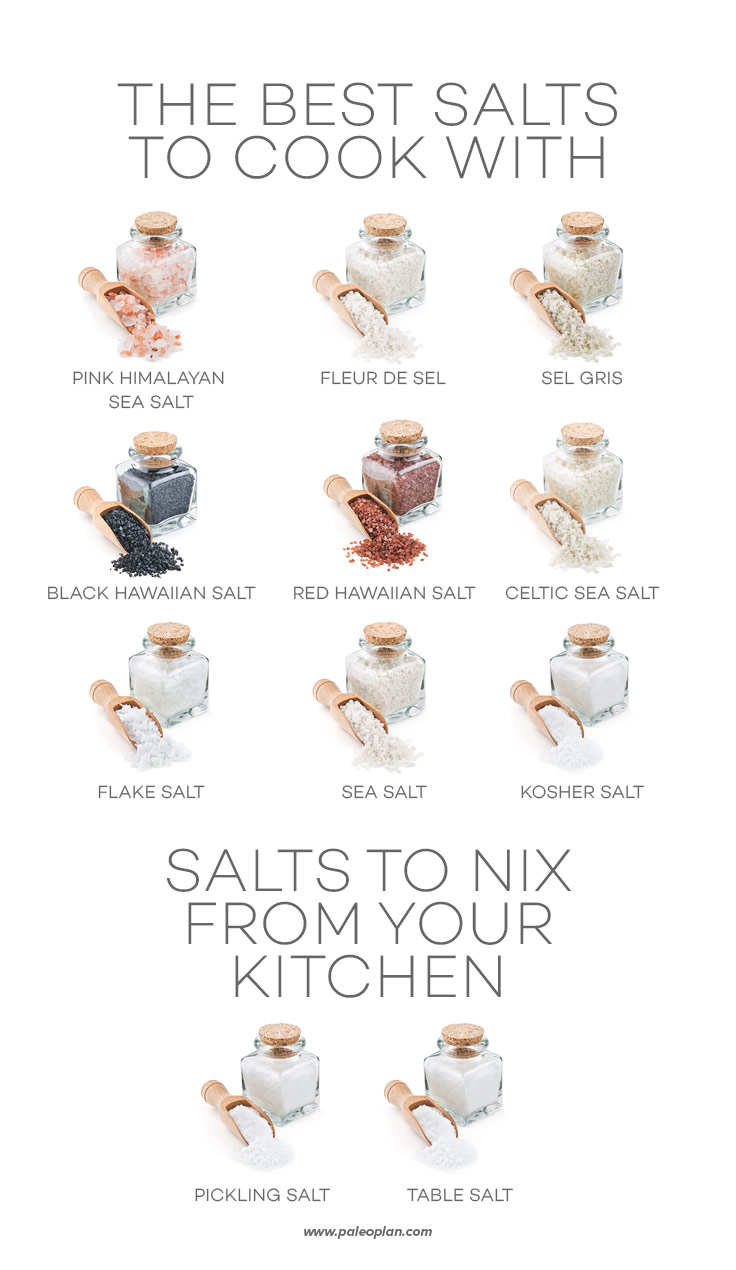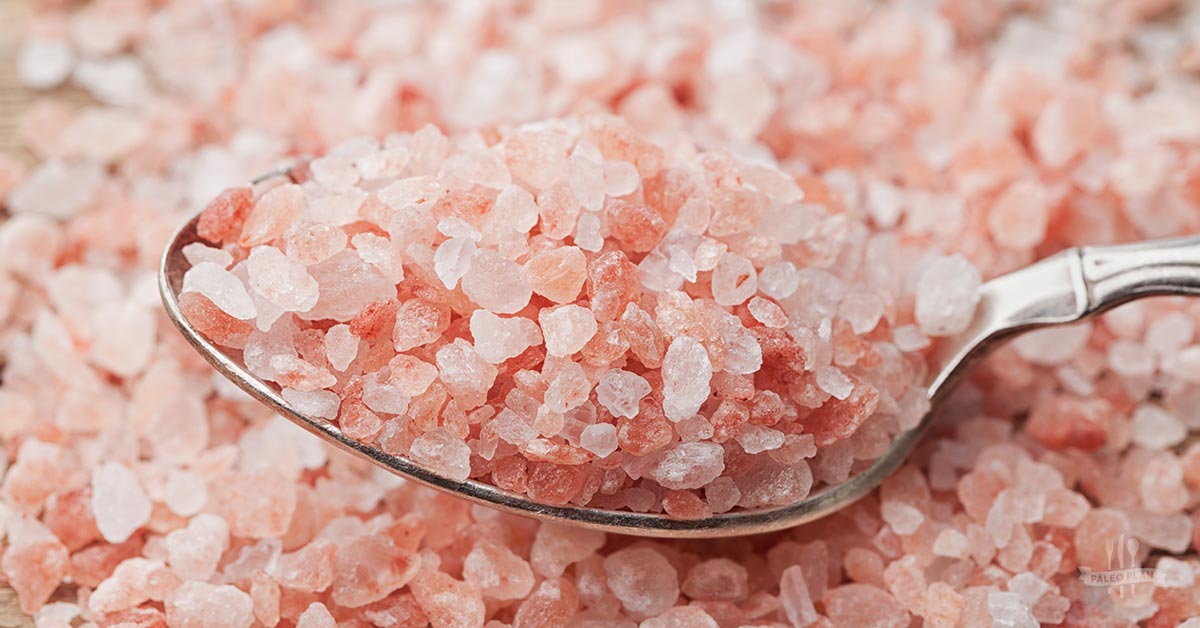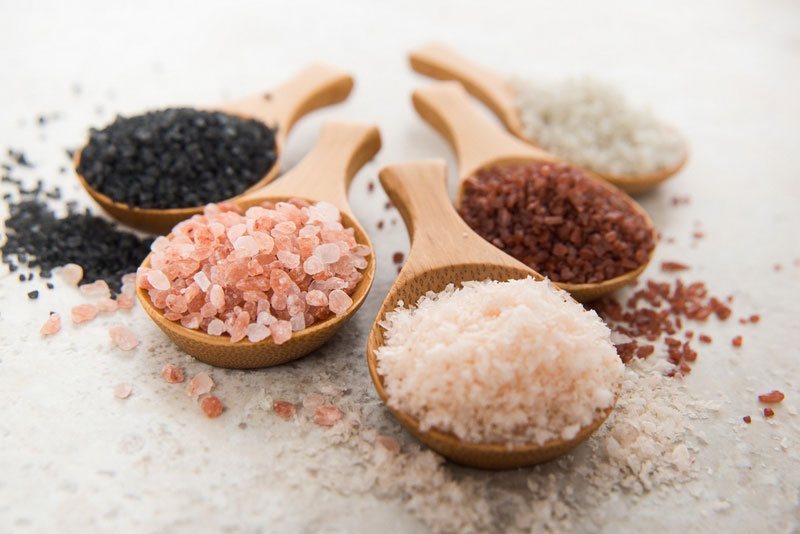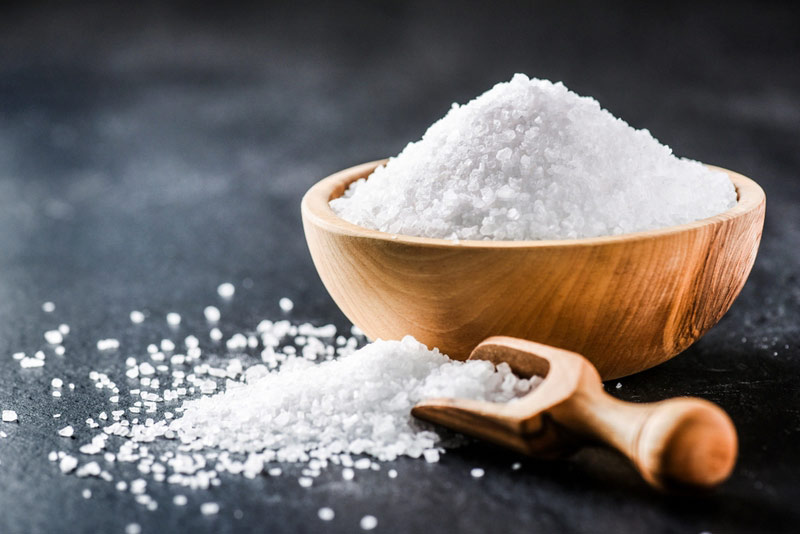Salt gets a bad rap, but it provides our bodies with vital minerals that are essential to our health. Here’s the best and worst salts to keep in your kitchen.
We use salt every day, but we’re often warned that it contributes to things like high blood pressure and kidney issues.
However, our bodies need a certain amount of salt to support overall health. In fact, salt helps to maintain blood pressure and fluid balance, and supports nerve and muscle health. (1)
The key here is to add the right types of salt into your diet and steer clear of highly refined options, like table salt, which is stripped of important trace minerals you can find in unrefined salts.
There are literally dozens of different salts to choose from, and some are much better than others. Let’s take a look at the eleven most common salts, ranked from best to worst.
The Best Salts to Cook With
1. Pink Himalayan Sea Salt
Pink Himalayan sea salt is a hot commodity in the health and wellness industry due to its purported health benefits.
This specific type of salt comes from Pakistan, near the Himalayas, and contains trace minerals like potassium and magnesium. The iron oxide in the salt gives it a signature pink color. (2)
Benefits: This natural salt contains up to 84 different trace minerals and elements. It beats out all other salts with its high potassium, magnesium, and iron content. (3)
2. Fleur de Sel
Fleur de sel is a delicate salt that originates from France, and is one of the best finishing salts available. It’s very thin, and retains much of its moisture from harvesting, leaving it with a much saltier taste than some of the other options on this list.
It tastes very strong, so a little goes a long way. We recommend sprinkling it over delicious Paleo recipes to bring them to the next level. Try it on steamed veggies, a gourmet salad, or a decadent dessert.
Benefits: This pure salt contains minerals and electrolytes such as calcium, magnesium, and potassium.
3. Sel Gris
Sel gris is a specialty salt that comes in different shades of grey. Like fleur de sel, it is harvested in France.
Sel gris hails from salt ponds that are lined with clay, creating a crunchy and moist salt. It holds up well in all kinds of healthy recipes, adding hearty flavor and texture to nearly any dish.
Benefits: Each salt crystal is packed with minerals and flavor. Look for quality brands that sell pure and unrefined sel gris, such as Salt Works, to ensure you’re getting calcium and magnesium. (4)
4. Black Hawaiian Salt
Commonly referred to as black sea salt or black lava salt, black Hawaiian salt comes infused with activated charcoal. The activated charcoal adds unique flavor and can help detoxify the body.
Benefits: Activated charcoal helps flush out built-up toxins in the body by binding to drugs as well as toxins. (5) Plus, black Hawaiian salt contains important trace minerals and electrolytes.
5. Red Hawaiian Salt
Also known as red Alaea salt, red Hawaiian salt gets its beautiful color from purified red clay from Kauai, an island in Hawaii. The clay in the salt helps to bring out the flavor in many dishes, and is also said to help lock in moisture when cooking meat.
Benefits: Red Hawaiian salt contains trace minerals and electrolytes, and contains a high-quality source of digestible iron.
Mountain Rose Herbs sells a high-quality red Hawaiian salt that contains iron and trace minerals, and pairs well with many recipes – even desserts!
6. Celtic Sea Salt
This high mineral sea salt is tinted gray and comes from the coast of France. Celtic sea salt also retains quite a bit of moisture from seawater.
Benefits: This high-quality source of sodium can help alkalize your body, support electrolyte balance, boost energy levels, regulate blood pressure, and reduce muscle cramping.
7. Flake Salt
Flake salt adds a beautiful touch to many recipes, and comes in large crystals that are often used to finish baked goods.
Benefits: You’ll find lots of minerals in this salt if it’s made naturally from solar evaporation. This is when the sea evaporates in open basins through the natural use of the sun and wind. (6)
Be sure to look for flake salt that is naturally sourced, unrefined, and free from additives. This Pacific Blue flake salt is a great option.
8. Sea Salt
Natural sea salt comes from the evaporation of seawater and is crunchier and stronger tasting than table salt, though the sodium content is about the same. It can be unrefined or refined, depending on how it is manufactured.
Benefits: When sea salt is found in its unprocessed, natural state, it still holds onto its trace minerals. Some of the minerals found in natural sea salt include potassium, magnesium, and calcium.
9. Kosher Salt
Kosher salt is commonly used in Jewish culinary dishes. For salt to be kosher, it must be free from any additives.
In fact, it’s more appropriate to call it “koshering salt”, as it’s used in the process of making meat kosher. It helps draw out the blood from meat, a required step.
Kosher salt crystals are larger than some other salt options, making them the perfect size for this ritual. (7)
Benefits: Kosher salt can still come from inland salt deposits as opposed to the sea, meaning that it may be processed and not as pure as some of the other options on this list.
The 2 Salts You Should Nix From Your Kitchen
10. Pickling Salt
Pickling salt is used as a preservative in processes like canning and pickling. It is pure sodium chloride and super-fine, so it easily dissolves.
However, it really should be avoided. Much like table salt, pickling salt is highly refined and does not contain as many health-promoting minerals and electrolytes as some of the options on this list.
If you’re looking to do some at-home pickling, use sea salt instead.
11. Table Salt
Table salt finds itself on the very bottom of this list because it is highly processed. It comes from salt deposits and is then subjected to a lengthy processing transformation.
During processing, the minerals are removed from the salt, and you are left with a super-fine, highly processed salt that contains anti-caking agents and fewer health benefits than some of the other choices on this list.
While table salt is generally used in recipes because its texture makes baking and cooking with it easy, it’s a less healthy choice.
The Bottom Line
There are many different types of salts you can use for your favorite recipes, and some are definitely healthier options than others.
Ditch the salt shaker and sprinkle on some fleur de sel or some beautiful red Hawaiian salt over any of these gourmet, chef-created Paleo recipes. Try using different salts to make the Bacon Bars, Mongolian Red Pepper Beef, or Pulled Pork!





